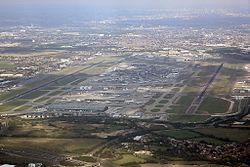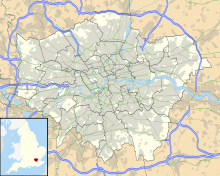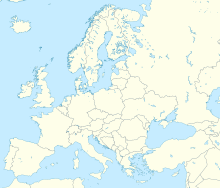
Back Lughawe Londen-Heathrow Afrikaans مطار لندن هيثرو Arabic مطار هيثرو ARZ Aeropuertu de Londres-Heathrow AST Hitrou Beynəlxalq Hava Limanı Azerbaijani Аэрапорт Хітроў Byelorussian Летище „Лондон Хийтроу“ Bulgarian হিথ্রো বিমানবন্দর Bengali/Bangla Aerodrom Heathrow BS Aeroport de Londres-Heathrow Catalan
London Heathrow Airport | |||||||||||||||
|---|---|---|---|---|---|---|---|---|---|---|---|---|---|---|---|
 | |||||||||||||||
 | |||||||||||||||
| Summary | |||||||||||||||
| Airport type | Public | ||||||||||||||
| Owner/Operator | Heathrow Airport Holdings | ||||||||||||||
| Serves | Greater London Urban Area | ||||||||||||||
| Location | London Borough of Hillingdon, England, United Kingdom | ||||||||||||||
| Opened | 25 March 1946 | ||||||||||||||
| Hub for | |||||||||||||||
| Elevation AMSL | 83 ft / 25 m | ||||||||||||||
| Coordinates | 51°28′39″N 000°27′41″W / 51.47750°N 0.46139°W | ||||||||||||||
| Website | www | ||||||||||||||
| Map | |||||||||||||||
| Runways | |||||||||||||||
| |||||||||||||||
| Statistics (2023) | |||||||||||||||
| |||||||||||||||
Heathrow Airport (/ˌhiːθˈroʊ, ˈhiːθroʊ/),[6] called London Airport until 1966 (IATA: LHR, ICAO: EGLL),[7] is the main international airport serving London, the capital of England and the United Kingdom. It is the largest of the six international airports in the London airport system (the others being Gatwick, City, Luton, Stansted and Southend). The airport is owned and operated by Heathrow Airport Holdings, owned mostly by Qatar Investment Authority, Public Investment Fund and CDPQ.[8] In 2022, it was the second-busiest airport in the world by international passenger traffic and the busiest airport in Europe in 2023.[9] In fact, it's ranked as one of the busiest airports in the world in the Airports Council International rankings.[10] It is also the airport with the world's most international connections as of 2023.[11]
Heathrow was founded as a small airfield in 1930[12] but was developed into a much larger airport after World War II. It lies 14 miles (23 kilometres) west of Central London on a site that covers 4.74 square miles (12.3 square kilometres). It was gradually expanded over 75 years and now has two parallel east–west runways, four operational passenger terminals and one cargo terminal.[7] The airport is the primary hub for British Airways and Virgin Atlantic.
- ^ "Supporting a Global Britain – The Economic impact of Heathrow Airport" (PDF).
- ^ "Heathrow Best placed for Britain" (PDF).
- ^ "Facts and figures | Heathrow".
- ^ "Aircraft and passenger traffic data from UK airports". UK Civil Aviation Authority. 3 March 2018. Archived from the original on 11 February 2017. Retrieved 30 July 2019.
- ^ "Traffic Statistics | Heathrow". Heathrow Airport. Retrieved 22 January 2020.
- ^ "'Heathrow'". Oxford Learners Dictionaries. Retrieved 7 July 2021.
- ^ a b "London Heathrow – EGLL". NATS Aeronautical Information Service. Archived from the original on 20 February 2018. Retrieved 21 April 2011.
- ^ "About Heathrow | Heathrow". Heathrow Airport. Retrieved 15 April 2024.
- ^ Cole, Fergus (12 April 2023). "Ranking: London Heathrow Reigns Supreme as Europe's Busiest Airport". businesstravelerusa.com. Retrieved 21 October 2023.
- ^ Josephs, Leslie (15 April 2024). "World's busiest airports show surge in international travel. Here are the rankings". CNBC. Retrieved 15 April 2024.
- ^ "London Heathrow Reclaims Title as World's Most Connected Airport". Business Traveler USA. 22 September 2023. Retrieved 8 October 2023.
- ^ "Our History | Heathrow". Heathrow Airport. Retrieved 14 April 2024.


